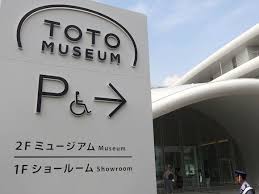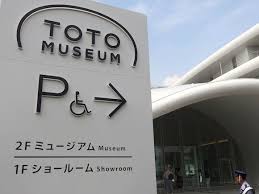
The Washlet, the high-tech, derriere-washing, tushie-warming toilet makes the Japanese proud perhaps in the same manner as they are proud of the Walkman and the PlayStation and karaoke.
And as if to prove this, a $60 million museum devoted to it was built by Toto, the maker of the beloved Washlet, on the southernmost of Japan’s four main islands.
The museum has already welcomed 30,000 visitors in the three months that it’s been open and was designed to celebrate the company’s 100th anniversary in 2017.
Charting the evolution of the Japanese toilet from the ceramic squatters of the 19th century to Toto’s renowned Washlet, a toilet seat with a built-in bidet, the museum has thousands of items on display.
Toto says that going to a bathroom with a Washlet helps people relax and is considered to be the convergence point for Japan’s attention to personal hygiene. This is also a commitment to providing good hospitality and its technological expertise.
This month, Toto shipped its 40 millionth Washlet.
From the first rudimentary model with cords and dials, launched in 1980, to the top-of-the-line Neorest, Toto is displaying multiple generations of the Washlet in the museum.
The bidet system that’s built into the seat, which sprays every nook and cranny is at the core of the Washlet. These types of toilets can be seen v apart from being a standard in Japanese homes.
There are seat warmers I the newest model and it does not stop at washing. The user can also control the water temperature and pressure. A water massage function and a warm air dryer are present in some models.
There’s often a “power deodorizer” function, and many play a flushing music — called “otohime,” literally “sound of a princess” — to mask any embarrassing noises in public restrooms.
Some of the modern and high tech toilets spray an antibacterial water into the illuminated bowl so you know it’s clean while others have automatic sensors so they lift the seat cover when a person approaches the toilet.
It’s not unusual to see Chinese tourists with two or three Washlet boxes stacked on their carts checking in at Tokyo’s main airport as the Washlet has proven popular in bottom-bathing cultures, such as the Middle East.
However the West is yet to popularly adopt the Japanese toilet and with showrooms in Los Angeles, Boston and Chicago, with another opening soon in New York, Toto is promoting Washlet loos in the United States.
However the price of these toilets is a dampening factor. While the top-of-the-line Neorest toilet retails for $6,500, the most simple Washlet — a toilet seat with in-built bidet — costs $599. Additionally a power connection is required next to the potty.
The museum has a toilet that built to be plonked into a hotel room during the building boom before the 1964 Olympics and those that are extra-wide, extra load-bearing that Toto makes for sumo wrestling stadiums. It also displays toilets from the restrooms from the Japanese parliament. He museum also houses the historical bathroom suite used that was used by Douglas MacArthur, the American general who oversaw the occupation of Japan after World War II.
There are some funny exhibits, too, such as the “Toto talk” motorbike that toured the country powered by biogas.
(Source:www.thewashingtonpost.com)
And as if to prove this, a $60 million museum devoted to it was built by Toto, the maker of the beloved Washlet, on the southernmost of Japan’s four main islands.
The museum has already welcomed 30,000 visitors in the three months that it’s been open and was designed to celebrate the company’s 100th anniversary in 2017.
Charting the evolution of the Japanese toilet from the ceramic squatters of the 19th century to Toto’s renowned Washlet, a toilet seat with a built-in bidet, the museum has thousands of items on display.
Toto says that going to a bathroom with a Washlet helps people relax and is considered to be the convergence point for Japan’s attention to personal hygiene. This is also a commitment to providing good hospitality and its technological expertise.
This month, Toto shipped its 40 millionth Washlet.
From the first rudimentary model with cords and dials, launched in 1980, to the top-of-the-line Neorest, Toto is displaying multiple generations of the Washlet in the museum.
The bidet system that’s built into the seat, which sprays every nook and cranny is at the core of the Washlet. These types of toilets can be seen v apart from being a standard in Japanese homes.
There are seat warmers I the newest model and it does not stop at washing. The user can also control the water temperature and pressure. A water massage function and a warm air dryer are present in some models.
There’s often a “power deodorizer” function, and many play a flushing music — called “otohime,” literally “sound of a princess” — to mask any embarrassing noises in public restrooms.
Some of the modern and high tech toilets spray an antibacterial water into the illuminated bowl so you know it’s clean while others have automatic sensors so they lift the seat cover when a person approaches the toilet.
It’s not unusual to see Chinese tourists with two or three Washlet boxes stacked on their carts checking in at Tokyo’s main airport as the Washlet has proven popular in bottom-bathing cultures, such as the Middle East.
However the West is yet to popularly adopt the Japanese toilet and with showrooms in Los Angeles, Boston and Chicago, with another opening soon in New York, Toto is promoting Washlet loos in the United States.
However the price of these toilets is a dampening factor. While the top-of-the-line Neorest toilet retails for $6,500, the most simple Washlet — a toilet seat with in-built bidet — costs $599. Additionally a power connection is required next to the potty.
The museum has a toilet that built to be plonked into a hotel room during the building boom before the 1964 Olympics and those that are extra-wide, extra load-bearing that Toto makes for sumo wrestling stadiums. It also displays toilets from the restrooms from the Japanese parliament. He museum also houses the historical bathroom suite used that was used by Douglas MacArthur, the American general who oversaw the occupation of Japan after World War II.
There are some funny exhibits, too, such as the “Toto talk” motorbike that toured the country powered by biogas.
(Source:www.thewashingtonpost.com)





